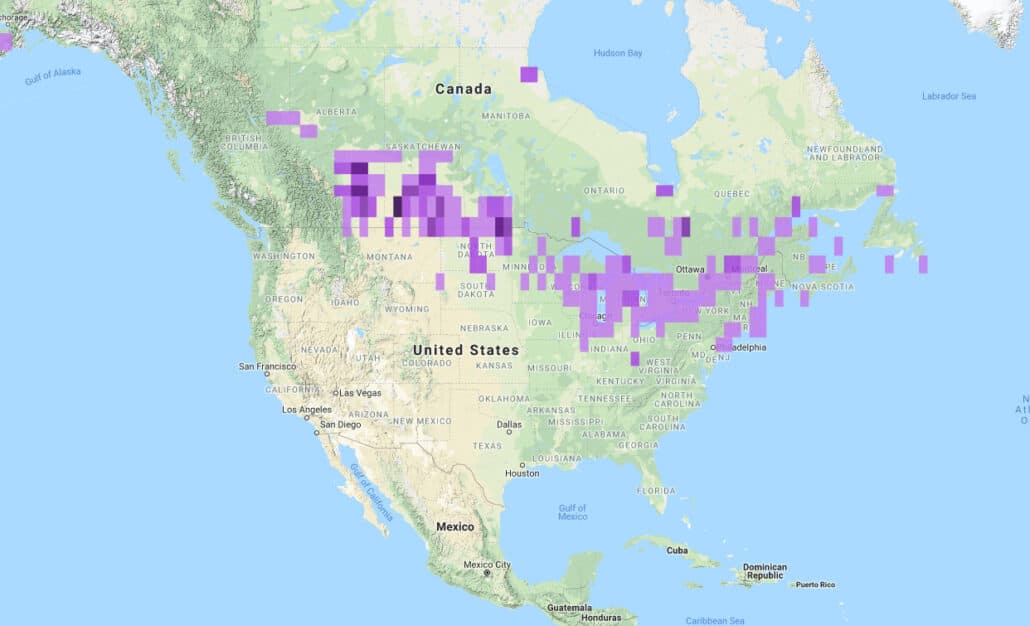
If you decided that seeing a snowy owl in the wild would be a great goal for 2020, and you haven’t seen one yet, good luck! Snowy owls have turned up in their regular haunts in the past month or so, but this winter is not proving to be an irruption season. Most memorably, in the winters of 2013–2014, and again in 2017–2018, snowies were spotted far from their usual wintering turf, including in Bermuda and Jacksonville, Florida.
Is there a snowy owl in your area? Check out this eBird map that shows where snowy owls have been reported in November and December 2020 in the U.S. »
So far, a few have been reported as far south as northern New Jersey, central Ohio, and northern Illinois—which is typical. Lots of snowies have been reported recently in New England, southern Ontario, and the northern Plains states, and that’s typical, too.
So, you might have to travel a bit to see a snowy owl in 2020, if you want to keep that resolution. It seems that the snowy owl population undergoes an irruption every four years, so the winter of 2021–2022 is likely to be “snowier” than this one.
Research has shown that snowy owls move south in big numbers not when food is scarce in their far northern breeding grounds, but when food was abundant there the prior spring. Snowies lay between three and eleven eggs in their nest—depending upon the food supply during nesting. The winter following a fecund spring will push lots of snowy owls to more southerly locales.
Snowy owls are mostly white with various amounts of dark spots or barring. Male snowies lose those markings as they age, but first-year birds and females can be densely barred. Most owls are nocturnal (active at night), but snowy owls are diurnal, and during the endless sunshine of summer in the Arctic, they hunt at all hours of the day and night.
If you succeed in spotting a snowy owl this winter, please remember not to disturb it. Snowy owls have been “loved to death” by people seeking a close encounter. Here’s some information on how to watch snowy owls without inadvertently harming them »
For the past seven years, researchers have been tagging snowy owls in an effort called ProjectSnowstorm. Their results are fascinating as they map the locations of individual owls throughout the year. To learn more about snowy owl migration, check out Project SNOWstorm, a conservation effort co-founded by BWD columnist Scott Weidensaul.



